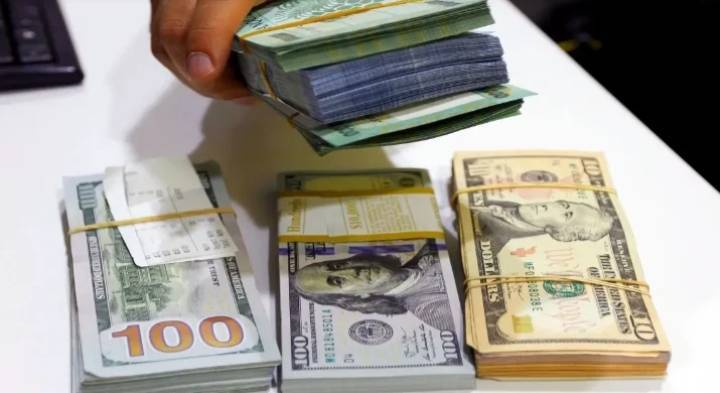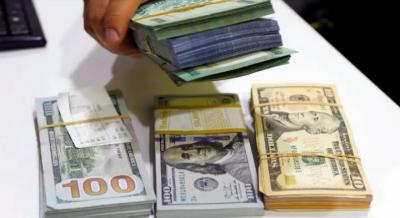As of yesterday, the official exchange rate of 15,000 Lebanese Lira has been activated instead of 1,507.5 Lira, as announced by the Governor of the Central Bank, Riad Salameh, in an interview with Reuters the day before yesterday. Although this decision has been widely circulated and previously announced several times by the Minister of Finance and the Prime Minister of the caretaker government, and confirmed by the Central Bank, no official decision from the Ministry of Finance or the Central Bank has been issued to confirm that the dollar's exchange rate has officially changed.
The procedural methods of changing the official exchange rate legally have sparked debates and interpretations that it should occur either through a law or a circular issued by the Central Bank, as has been customary. Since neither of those decisions has been issued yet, the head of the Food Industries Association, Munir Al-Bassat, clarified to "Nidaa al-Watan" that "merchants and industrialists have not begun to adopt the 15,000 Lira rate in the absence of an official decision," considering the problem is that "the importer pays VAT at the rate of 15,000 Lira while the VAT is calculated for the merchant at the rate of 1,500 Lira." Therefore, the cost differential will be trapped in the Ministry of Finance, which will have repercussions on working capital, if legal action is not taken regarding the official exchange rate of 15,000 Lira, consequently wasting the value of the tax paid, which has increased tenfold. He confirmed that apart from this, "the rise in the official exchange rate to 15,000 Lira does not generally have an impact, but the issue is limited to the payment of VAT."
In any case, the calculation of VAT based on an exchange rate of 1,500 Lira or 15,000 Lira does not affect the prices of goods on supermarket shelves, considering that the consumer, as explained by the head of the Food Importers Association, Hani Bahsali, pays the VAT percentage on the total price of the product, which is calculated according to the black market exchange rate.
From a computational standpoint, certified public accountant and auditor Jamal Ibrahim Al-Zogbi explained in a conversation with "Nidaa al-Watan" that "VAT for employers and private companies is not considered burdensome, as companies collect the VAT and deposit it with the aim of paying it to the state, hence the impact of raising the exchange rate is reflected in income tax."
He provided an example: If a merchant buys products worth 1,000 dollars and sells them for 11,000 dollars, thus earning 1,000 dollars. According to the 1,500 Lira exchange rate, this amount equals 1.5 million Lira, while at the 15,000 Lira exchange rate, the amount equals 15 million Lira. Therefore, instead of the merchant being liable to pay tax on 1.5 million dollars, they will now owe it on 15 million Lira.
For instance, a Limited Liability Company would face a 17% tax plus a 10% dividend distribution tax, which would impose significant financial burdens tax-wise, affecting its partners and shareholders, as instead of paying 100 dollars in dividend distribution, or 150 thousand Lira, it would now need to pay 1.5 million Lira in distribution taxes.
Regarding salary income tax on employees, Al-Zogbi noted that "wages paid in Lebanese Lira change according to laws and resolutions, with the minimum until today at 2.6 million Lira, pending the issuance of a resolution to raise it to 4.5 million Lira upon approval and publication in the official gazette. Therefore, institutions are not tax-wise impacted by wage increases since it is the employee who pays income taxes. As for salaries paid in bank dollars, they will be calculated at the rate of 15,000 Lira for the dollar."
For institutions that have previously purchased goods and still have stock, each of those companies will be affected differently. If a company has stock of goods purchased at an exchange rate of 1,500 Lira to the dollar, today, with the dollar set at 15,000 Lira, the equation changes. Al-Zogbi states that "the Ministry of Finance allowed through a decision to re-evaluate assets, but did not allow for the re-evaluation of inventory. Thus, let's assume that if the inventory valued at 100,000 dollars was at the 1,500 Lira rate, that equals 150 million Lira, but at the 15,000 Lira rate, it equals 1.5 billion Lira. Consequently, the difference between 1.5 billion Lira and 150 million Lira is about 1.35 billion Lira, which will create a problem for income tax upon sale as it will show profits for the merchant due to the increased value of goods, while the merchandise remains the same, and herein lies the issue.
He adds, "Even if goods worth only 50,000 dollars (approximately 750 million Lira) are sold, the difference amounts to 600 million Lebanese Lira if the taxes are in Lira. Here, there is a loss in dollars, but the profit in Lebanese Lira will be enormous which will increase the tax on profits."
Therefore, it becomes apparent that activating the new exchange rate of 15,000 Lira is not as straightforward as some might think, and it may take some time to adjust to the new exchange rate system, which has included three additional zeros, and the situation will continue to evolve until the exchange rate is liberated through the adoption of the "Sayrafa" platform rate.




